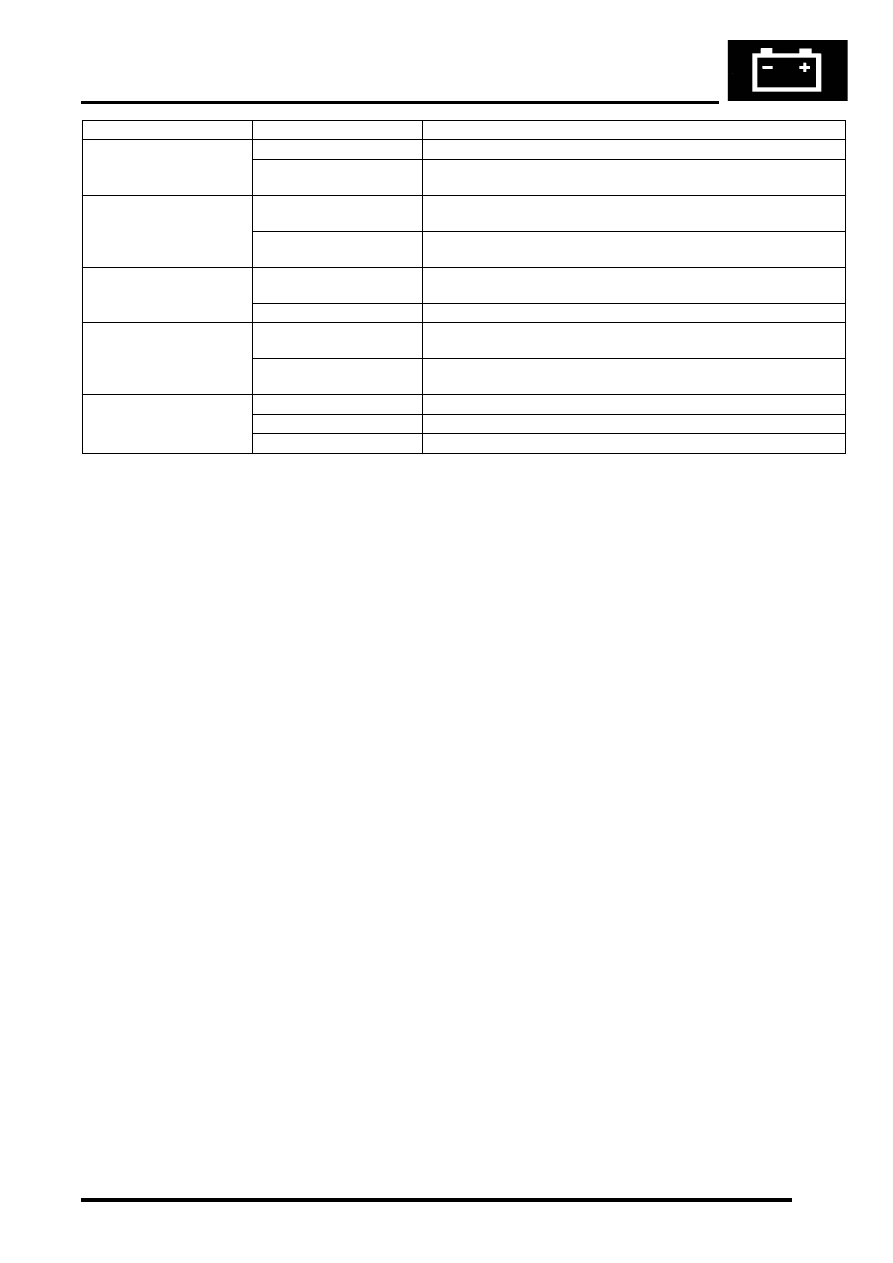Discovery 2. Manual - part 318

BODY CONTROL UNIT
DESCRIPTION AND OPERATION 86-3-13
Anti-theft system
The BCU controls the logical switching operations for enabling and activating the anti-theft system. Features include:
l
Perimetric protection – monitors the condition of doors and hinged panels.
l
Volumetric protection – monitors the vehicle's interior space.
l
Remote locking, superlocking and unlocking functions.
l
Engine immobilisation and remobilisation.
l
Advanced mislock detection and automatic compensation.
l
EKA code functions.
l
Customer configuration options.
l
Market configuration options.
Immobilisation
The immobilisation system comprises the following components:
l
RF receiver.
l
RF transmitter/ transponder.
l
Transponder coil.
l
BCU.
l
Door switches, door lock switches and bonnet switch.
l
IDM.
l
ECM.
l
Starter solenoid relay.
l
Status LED.
Alarm system
The alarm system comprises the following components:
l
RF receiver.
l
RF transmitter.
l
BCU.
l
IDM.
l
Door switches, door lock switches and bonnet switch.
l
Battery backed-up sounder (BBUS).
l
Status LED.
On non NAS vehicles, power supply for the alarm sounder and the battery BBUS is provided through two relays in the
passenger compartment fuse box. Each of the coils of the alarm relays are directly connected to the IDM which
controls their operation under the direction of BCU signals received via the serial data bus.
On NAS vehicles, an audible warning is provided through operation of the vehicle horns. The BCU provides an earth
path for the coil of the horn relay to initiate vehicle horn operation.
ALARM SYSTEM AND HORN, DESCRIPTION AND OPERATION, Description.
Acclimatisation locking
Disabled
The vehicle cannot be locked if the ignition is on.
Enabled
The vehicle can be locked if the ignition is on and the engine is
running.
Alarm tamper
Disabled
The security system LED does not flash when the security system has
been tampered with.
Enabled
The security system LED flashes when the security system has been
tampered with.
Engine immobilised
LED off
The security system LED does not flash when the engine is
immobilised.
LED flash
The security system LED flashes when the engine is immobilised.
Low battery warning
Disabled
The security system LED does not flash when the remote transmitter
battery is low.
Enabled
The security system LED flashes when the remote transmitter battery
is low.
Emergency Key Access
(EKA)
Disabled
EKA is disabled.
Enabled
EKA is enabled and the door locks operate electrically.
No unlock
EKA is enabled, but the door locks do not operate electrically.
Function
Option
Details